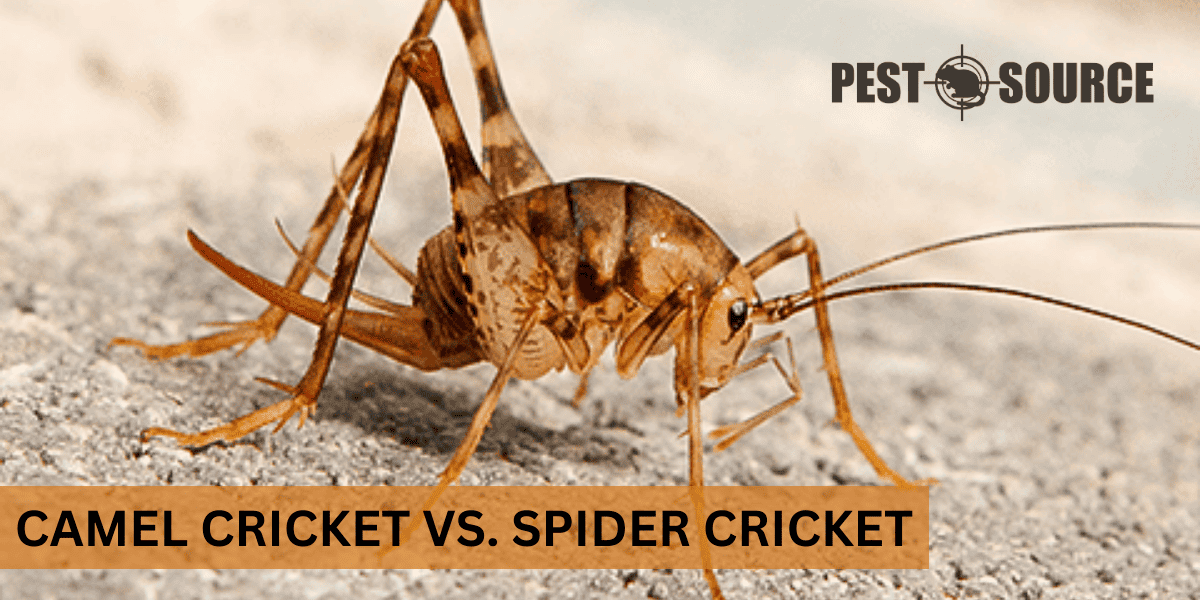Camel crickets and spider crickets are common names for the same insect, known scientifically as Rhaphidophoridae. These crickets are characterized by their humpbacked appearance, long legs, and lack of wings. This article clarifies the terminology and explains the unique features and behaviors of these insects, providing a comprehensive understanding of this often misunderstood creature.
POINTS
- Camel crickets and spider crickets are the same insect, known for their humpbacked appearance and long legs, belonging to the family Rhaphidophoridae.
- Unlike other cricket species, camel crickets do not chirp because they lack sound-producing organs, and they prefer moist and dark environments like basements or caves.
- Camel crickets play an ecological role in decomposition, contributing to the nutrient cycle by breaking down plant and animal matter.
- They differ from other cricket species in physical appearance, habitat preference, and the tendency to congregate in groups, which can lead to infestations.
- Effective pest control methods for camel crickets include reducing moisture in the home, sealing entry points, removing potential habitats near the home, and using sticky traps.
Understanding Camel Crickets and Spider Crickets: Identification and Classification
Camel crickets and spider crickets are indeed the same insect, often causing confusion due to their two common names. These creatures are characterized by their distinctive humpbacked appearance and long, spider-like legs. Scientifically, they belong to the family Rhaphidophoridae, a group known for their adaptability to various environments.
Physical Characteristics: Humpback and Spider-like Appearance
The physical features of camel crickets are intriguing and serve as the basis for their common names. The ‘camel’ in camel cricket comes from their humpbacked structure, which resembles the curved back of a camel. This arched body shape is not just for show; it plays a role in their survival by allowing them to squeeze into tight spaces and conserve moisture.
Their ‘spider’ moniker is derived from their long, slender legs, which are reminiscent of those of a spider. These legs are not only for show; they enable the cricket to jump high and move quickly, which is crucial for escaping predators and foraging for food in their natural habitats.
Behavioral Patterns: Non-Chirping Crickets
Unlike their musical relatives, camel crickets do not chirp. This is because they lack the sound-producing organs that other cricket species use to create their characteristic songs. Instead, camel crickets communicate through other means, such as vibrations or pheromones, which are more suited to their quiet, dark environments.
In terms of behavior, camel crickets are primarily nocturnal, actively foraging for food at night. They are omnivorous scavengers, feeding on a variety of organic materials, including plants, fungi, and even other insects. Their movement patterns are erratic, and when startled, they often jump towards the perceived threat as a defense mechanism, which can be surprising to humans who encounter them.
Behavior and Habitat: Unique Non-Chirping Crickets in Moist Environments
Camel crickets have a strong preference for moist and dark environments. Places like basements, crawl spaces, and caves provide the ideal conditions for these crickets to thrive. Spider crickets seek out such habitats due to their need for moisture, which is essential for their survival, and the darkness provides cover from predators.
The ecological implications of their habitat preferences are significant. In their natural environments, camel crickets play a role in the decomposition process, breaking down plant and animal matter. This activity helps to enrich the soil and is a vital part of the ecosystem’s nutrient cycle.
When it comes to interactions with humans, these crickets often find their way into homes, particularly in areas that mimic their natural habitat, such as damp basements or laundry rooms. While they are not harmful, their presence can be unsettling, and in large numbers, they can become a nuisance.
Comparative Analysis: Camel Crickets vs. Other Cricket Species
Camel crickets differ from other cricket species in several notable ways. The most obvious distinction is their lack of sound-producing organs, which sets them apart from the chirping crickets commonly heard on summer nights. This silence can make camel crickets less noticeable until they are seen, often leading to unexpected encounters.
Physically, camel crickets have a more robust and humpbacked body compared to the flatter bodies of other crickets. Their long legs, adapted for jumping, are also much more pronounced than in other species, giving them a spider-like appearance that can be startling.
Behaviorally, camel crickets are unique in their preference for moist and dark environments, whereas many other cricket species can be found in a variety of habitats, including grassy fields and forests. Additionally, camel crickets are less likely to be found alone; they often congregate in groups, especially in suitable conditions, which can lead to large infestations.
Human Interaction and Pest Control Considerations
Camel crickets can become a pest when they enter homes, attracted by the damp and dark conditions similar to their natural habitats. They are often found in basements, garages, and sheds, where they can feed on a variety of household materials, including fabrics and plants.
Effective Pest Control Methods
To manage camel cricket infestations, consider the following pest control strategies:
- Reduce Moisture: Use dehumidifiers and fix leaks to make your home less inviting to these moisture-loving insects.
- Seal Entry Points: Check for and seal cracks and gaps in your home’s foundation, doors, and windows to prevent crickets from entering.
- Remove Debris: Clear out piles of wood, leaves, and other organic material near your home that could serve as a habitat for camel crickets.
- Use Traps: Sticky traps placed in areas where camel crickets are frequently seen can help reduce their numbers.
Addressing Misconceptions and Fears
Despite their daunting appearance, camel crickets are not dangerous. They do not bite or carry diseases, and they are not known to cause significant damage to homes. However, they can become a nuisance due to their sheer numbers and the psychological discomfort they can cause.



